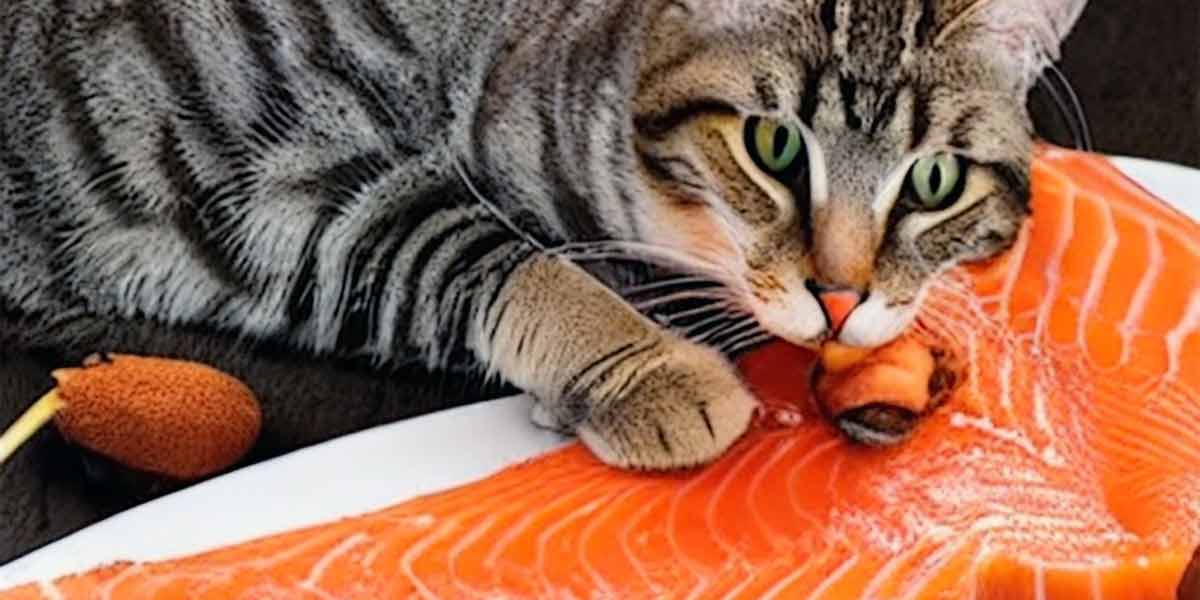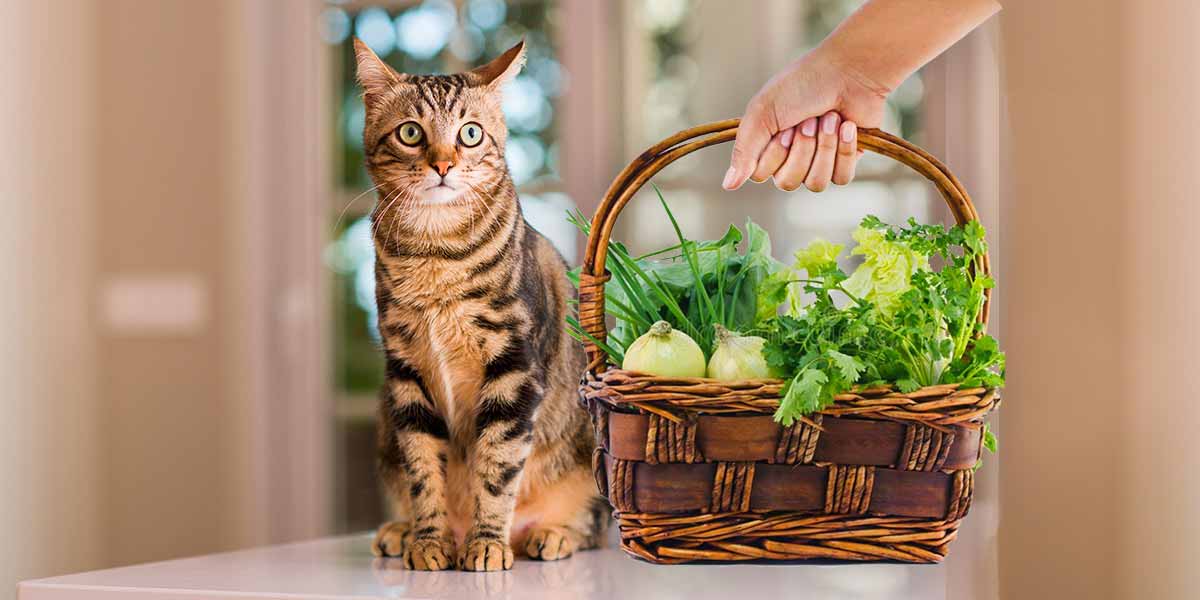Can I feed my cat raw chicken? If you’re a cat owner, you may have heard about the benefits of feeding your feline friend a raw food diet. One popular option is raw chicken. But can you feed your cat raw chicken? The answer is yes but with some important considerations.
As an affiliate, we earn from qualifying purchases. We get commissions for purchases made through links in this website’s posts from Amazon and other third parties.
Raw chicken can be a healthy addition to your cat’s diet, as it is a natural source of protein and nutrients. However, it’s essential to make sure the chicken is fresh and free from any harmful bacteria, such as salmonella or E. coli. Additionally, it’s important to ensure that the chicken is properly prepared and stored to reduce the risk of contamination.
Before adding raw chicken to your cat’s diet, it’s important to consult with your veterinarian to ensure it’s the right choice for your feline friend. Some cats may have underlying health conditions that make a raw food diet unsuitable, while others may require additional supplements to ensure they are getting all the necessary nutrients. With proper preparation and guidance from your veterinarian, feeding your cat raw chicken can be a healthy and tasty option.
Can I feed my cat raw chicken? The Benefits of raw chicken
Feeding your cat raw chicken has many benefits. Here are some of them:
- Nutritional Value: Raw chicken is rich in protein, vitamins, and minerals essential for your cat’s growth, maintenance, repair of tissues, and general good health. Vitamin B6, niacin, phosphorus, and selenium are essential for your cat’s immune system, nervous system, and overall health.
- Improved Digestion: Raw chicken contains digestive enzymes that can help improve your cat’s digestion. This can lead to better nutrient absorption and a healthier digestive system.
- Healthier Coat: Raw chicken contains essential fatty acids that can help improve your cat’s coat and skin health. This can lead to a shinier, healthier coat and less shedding.
- Helps maintain a healthy weight: Raw chicken is low in fat and calories, making it an excellent option for cats needing to lose or maintain a healthy weight.
- Better Hydration: Raw chicken contains moisture that can help keep your cat hydrated. This is especially important for cats that do not drink enough water.
- Improved Dental Health: Raw chicken contains bones that are rich in calcium and phosphorus. That can help clean your cat’s teeth and gums. Chewing on raw chicken bones can help clean your cat’s teeth and improve their dental health. As a result, this can lead to better dental health and less tooth decay.
Overall, feeding your cat raw chicken can be a healthy and nutritious addition to their diet. However, it is essential to ensure that the chicken is fresh, properly prepared, and free from any harmful bacteria. Before making any dietary modifications for your cat, always speak with your vet.
Risks of feeding your cat raw chicken: What you need to know
While cats in the wild may hunt and eat raw prey, domestic cats may not have the same digestive system and immune system to handle raw meat.
One of the biggest risks of feeding your cat raw chicken is the potential for bacterial contamination. Raw chicken can contain harmful bacteria such as Salmonella and Campylobacter, which can cause serious illness in both cats and humans. These bacteria can also be spread through contact with your cat’s feces, making it a risk for anyone in the household.
Another risk of feeding your cat raw chicken is the potential for nutritional imbalances. Raw chicken may not provide all the necessary nutrients that your cat needs, leading to deficiencies over time. Additionally, feeding your cat a diet that is too high in protein can lead to kidney problems and other health issues.
Feeding your cat raw chicken may come with several risks that you should be aware of.
Here are the most important 4 risks that can be bad for a cat’s health or even fatal:
- Bacterial contamination: Raw chicken can be contaminated with harmful bacteria such as salmonella and E. coli, which can cause serious health problems for your cat.
- Nutritional imbalances: Feeding your cat only raw chicken may result in nutritional imbalances that can lead to health problems in the long run. For example, raw chicken lacks taurine, an essential amino acid that cats need to maintain good health.
- Choking hazards: Raw chicken bones can pose a choking hazard for your cat. They can splinter and get stuck in your cat’s throat, causing serious injury or death.
- Parasites: Raw chicken may contain parasites such as tapeworms and roundworms, which can cause health problems for your cat.
To minimize the risks associated with feeding your cat raw chicken, it’s important to handle the chicken properly and follow safe food handling practices. Always wash your hands before and after handling raw chicken, and make sure to clean any surfaces or utensils that come into contact with the chicken. Additionally, consider consulting with your veterinarian before making major changes to your cat’s diet.

Choosing the right chicken for your cat
When it comes to feeding your cat raw chicken, it’s important to choose the right type of chicken. Here are some things to keep in mind:
1. Quality
Always choose high-quality chicken that is fresh and free from any signs of spoilage. Look for chicken that is firm to the touch, has a pinkish color, and has a slightly sweet smell. Avoid slimy chicken, that has a grayish color, or a foul odor.
2. Cuts
Choose boneless, skinless chicken breast or thigh meat for your cat. These cuts are lean and contain a good amount of protein, which is essential for your cat’s health. Avoid using chicken with bones as they can be a choking hazard for your cat.
3. Preparation
Make sure to wash your hands and any utensils that come into contact with raw chicken to prevent the spread of bacteria. To prevent cross-contamination, keep raw chicken away from other foods.
4. Quantity
Feed your cat small portions of raw chicken at a time, and make sure to remove any uneaten portions after 30 minutes to prevent spoilage. Too much raw chicken can upset your cat’s stomach and lead to digestive issues.
By following these tips, you can ensure that you’re choosing the right chicken to feed your cat.
Feeding your feline friend: How to safely prepare and cook raw chicken to feed your cat
Feeding your cat a raw food diet has become increasingly popular among pet owners. Raw chicken is a great source of protein for cats, but it’s important to prepare and cook it properly to ensure your feline friend stays healthy. In this article, we’ll go over the steps you need to take to prepare and cook raw chicken for your cat.
First, make sure the chicken you’re using is fresh and of good quality. Look for chicken that has a pinkish color and is free of any discoloration or unpleasant odors. It’s best to purchase chicken from a reputable source, such as a grocery store or butcher, to ensure it’s safe for your cat to eat.
Next, you’ll need to prepare the chicken by removing any bones, skin, and fat. These parts can be difficult for your cat to digest and can even be harmful to their health. Once the chicken is prepared, you can cook it by boiling, baking, or grilling it.
Make sure the chicken is cooked all the way through to avoid any potential health risks. With these steps in mind, you’ll be able to prepare and cook raw chicken for your cat with ease.
How much raw chicken should you feed your cat? A friendly guide
One question that may have crossed your mind is how much raw chicken should you feed your cat? While cats are carnivores and thrive on a meat-based diet, it’s important to ensure that you’re feeding them the right amount of food to maintain their health.
Overfeeding can lead to obesity, which can cause a range of health issues, including diabetes and joint problems or other health issues while underfeeding can result in malnutrition and other problems. So, how much raw chicken should you feed your cat?
In general, it’s recommended that cats consume around 2-3% of their body weight in food per day. This can be split into two or more meals to ensure that your cat’s nutritional needs are being met throughout the day.
How often should I feed my cat raw chicken? A guide to a healthy feline diet
While raw chicken can be a healthy addition to your cat’s diet, it’s important to understand the proper frequency to avoid any potential health risks. One factor to consider when determining how often to feed your cat raw chicken is their overall diet.
If your cat is already consuming a balanced diet of high-quality cat food, raw chicken should only be given as an occasional treat. However, if your cat is on a raw food diet, raw chicken can be given more frequently as a source of protein.
It’s also important to keep in mind that raw chicken should always be prepared and handled properly to avoid the risk of salmonella or other bacterial infections. It’s recommended to freeze raw chicken for at least 72 hours before feeding it to your cat to kill any potential parasites and to always wash your hands and any surfaces that come into contact with raw chicken.
Is raw cat food safe for cats? A Vet’s Perspective video:
Understanding cat’s dietary needs
Feeding your cat a balanced and nutritious diet is crucial for their overall health and well-being. Cats must eat a diet rich in protein and fat since they are obligate carnivores. Unlike humans, cats cannot produce certain essential amino acids on their own and must obtain them from their food.
In the wild, cats hunt and consume prey that is primarily made up of protein and fat. However, domesticated cats often rely on their owners to provide them with a balanced diet. Feeding your cat a diet high in carbohydrates or lacking essential nutrients can lead to serious health issues.
When it comes to feeding your cat, it’s important to choose high-quality cat food that is specifically formulated for their dietary needs. Look for cat food that contains real meat as the first ingredient and essential vitamins and minerals.
In addition to their regular diet, cats also require fresh water at all times. Make sure that your cat has access to clean, fresh water throughout the day.
It’s also important to note that cats have different nutritional needs at different stages of their life. Kittens require a diet that is higher in protein and fat to support their growth and development, while senior cats may require a diet that is lower in calories to maintain a healthy weight.
By understanding your cat’s dietary needs and providing them with a balanced and nutritious diet, you can help ensure that they live a long and healthy life.
When it comes to feeding your cat, there are some key factors to consider:
Protein
A large amount of a cat’s diet should consist of protein because it is an essential component for them. Cats require a minimum of 26% protein, with some experts recommending even higher levels. Good sources of protein for cats include meat, poultry, fish, and eggs.
Fat
Fat is another important nutrient for cats, providing them with energy and essential fatty acids. Cats require a minimum of 9% fat in their diet. Good sources of fat for cats include meat, fish, and poultry.
Carbohydrates
Cats do not require carbohydrates in their diet and are not able to digest them as efficiently as other animals. While some carbohydrates may be present in commercial cat food, it’s important to ensure that they do not make up a significant portion of your cat’s diet.
Vitamins and minerals
Besides protein, fat, and carbs, cats also need a range of vitamins and minerals to stay healthy. These include vitamins A, D, and E, calcium, and phosphorus, among others. Commercial cat food is typically formulated to provide these essential nutrients in the correct amounts.
Feeding your cat a balanced and nutritious diet is essential for their health and well-being. By understanding their dietary needs and providing them with a diet that is high in protein and fat, you can help ensure that your cat lives a long and healthy life.
Conclusion
In conclusion, raw chicken is an important part of your cat’s diet as it provides a variety of essential nutrients that are necessary for optimal health. However, it is important to ensure that the chicken is fresh, properly handled, and prepared to avoid the risk of bacterial contamination.
Consult with your veterinarian and discuss any significant dietary modifications with him before implementing them for your cat.
Thank you for reading this article!






